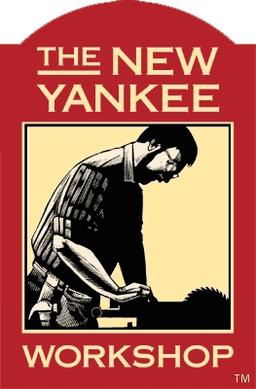The teeth feel much catchier after filing them with a triangular jeweler’s saw (left half is done), but it still takes a minute of rocking the but back and forth to get through 3/4" plywood.
Huh, I always assumed these were consumables. Never thought about sharpening one
They pretty much are. You can sharpen them, but the issue I’ve found is that over time and use they heat up and warp, and effectively become useless (especially on metal).
You could always do the old tile-cutting trick. Use the saw to cut a sponge. Now you have a sponge that perfectly fits inside the hole saw. Get it wet, and leave it in the saw when you cut. Now your hole saw will be cooled by the water in the sponge.
It’s an old trick for when you can’t easily keep running water on a tile saw while cutting a hole. Cuz you typically cut tile under water to prevent your blade from heating up. But if that’s not feasible, you can essentially just fill your saw blade with water instead.
Great advice, do you get a lot of nudes PMd to you for woodworking hacks like this? :)
It has only happened a few times, but it’s always a fun surprise.
You can fix the warping, or close-enough to “fixed”, if you’re poor or cheap or just obsessed with wringing the value from each purchase ( hi ).
Luckilly, the line between “fixable” and “holy shit, this things wobbling so much its going to grab, walk its way off the board, and cut into my leg” is readilly apparent, to anyone who has any business using such tools.
Honestly I just assume grab new ones once they go shitty, the cost of me taking the time to mess with it vs buying a new one is not worth it in terms of productivity. In my world of electrical the holes need to be perfectly circular, so I just assume not waste time on it.
Right there with you. I have cheap sets in case I loose the carbide-tipped ones in the size I want between pay-checks, and to lend out, but if one of those cheapos goes egg-shaped, I’m more likedy to throw it away or find another use for it than to try to fix it.
I found a few videos of folks sharpening them, thought I’d give it a try.
Can you file at an angle so the leading edge of the tooth is more narrow than the back? It might be less grabby, if that’s the issue.
If you drill a few 1/4" holes where the holesaw lands it will clear sawdust and cut 2x faster.
Start holesaw hole, drill dust holes, finnish holesaw hole.
Going to need an illustration so I don’t get my dick stuck anywhere…
Start drill. Your dick will no longer be stuck anywhere. Rather, your dick will be everywhere. Problem solved.
For wood hole-saws, you might want to double-check the angle of each tooth. Some of them will have a turned-out/turned-in alternating profile, and this is both: doable because thinner sheet metal is used to make those saws, and necessary because otherwise the track they cut would be too narrow, causing the saw to bind up and warp quicker.
Basically, if you can’t afford carbide-tipped, super-rigid hole-saws, and you want your hole-saws to last, maintaining the over-all circular/cylindrical profile of the overall saw, and the geometry of each tooth is at least as important as the sharpness of the teeth.
That sharpness is wasted if the profile goes egg-shaped, causing each tooth to have to carve its own path, essentially from scratch. your wood plugs should NOT just fall out of the saw after each cut.
The real pro-tip? This. If you start with a template made with a brand-new hole-saw, it will help maintain the circular profile of the blade itself, cutting down on your hole-saw maintenance/sharpening/replacement needs significantly.
Me? I just got sick of relying on/replacing the 1/4" drill-bit in the center. I use it to line-up my template, then I take it out, unless I’m using the Spyder kit I picked-up for 75%-off on clearance about seven years ago, although I have saved and continue to use Spyder hex-arbors where the drill-tip has broken or fallen out.
For $20, you can’t go wrong with the Spyder arbors. I even have one of each of both sizes that I’ve shortened for use in my drill-press. If that sounds crazy, just rest assured that I still have all of my fingers, so far.
EDIT: Holy shit, JFC, I’ve just realized you’re clamping the saw itself. STOP THAT. The only way to properly clamp a holesaw is to clamp the arbor, or with a bolt through the center-hole as your clamp, but never clamp the saw itself. Maybe, MAYBE, you could put two such saws back-to-back, and clamp the seam where they meet with V-blocks, or in a lathe-chuck, but your setup here is just asking that thing to go egg-shaped.
deleted by creator
I’d splurge for a hole saw with carbide teeth. Costs more but lasts longer
Buy a new one, or better yet a set of forstner bits. Holesaws suck in comparison when it comes to quality. Takes a bit longer to cut large holes tho.
Yeah, very happy with my Forstners which I have up to 1-1/4" I think.
Starett make some of the best ones as far as I’m aware. That’s what I use. Can’t fault them
Buy a new one
I wonder if the steel in the saw got hot enough to lose its heat treat. If not, sharpening is a great idea. If yes, you will still be able to get the blade sharp but it won’t hold an edge as long as it did originally.
This all really comes down whether or not you saw smoke from the wood, the species of wood (some smoke much cooler than others), and the alloy (some alloys have much lower temp heat treat processes than others).
This one definitely has made some smoke.



